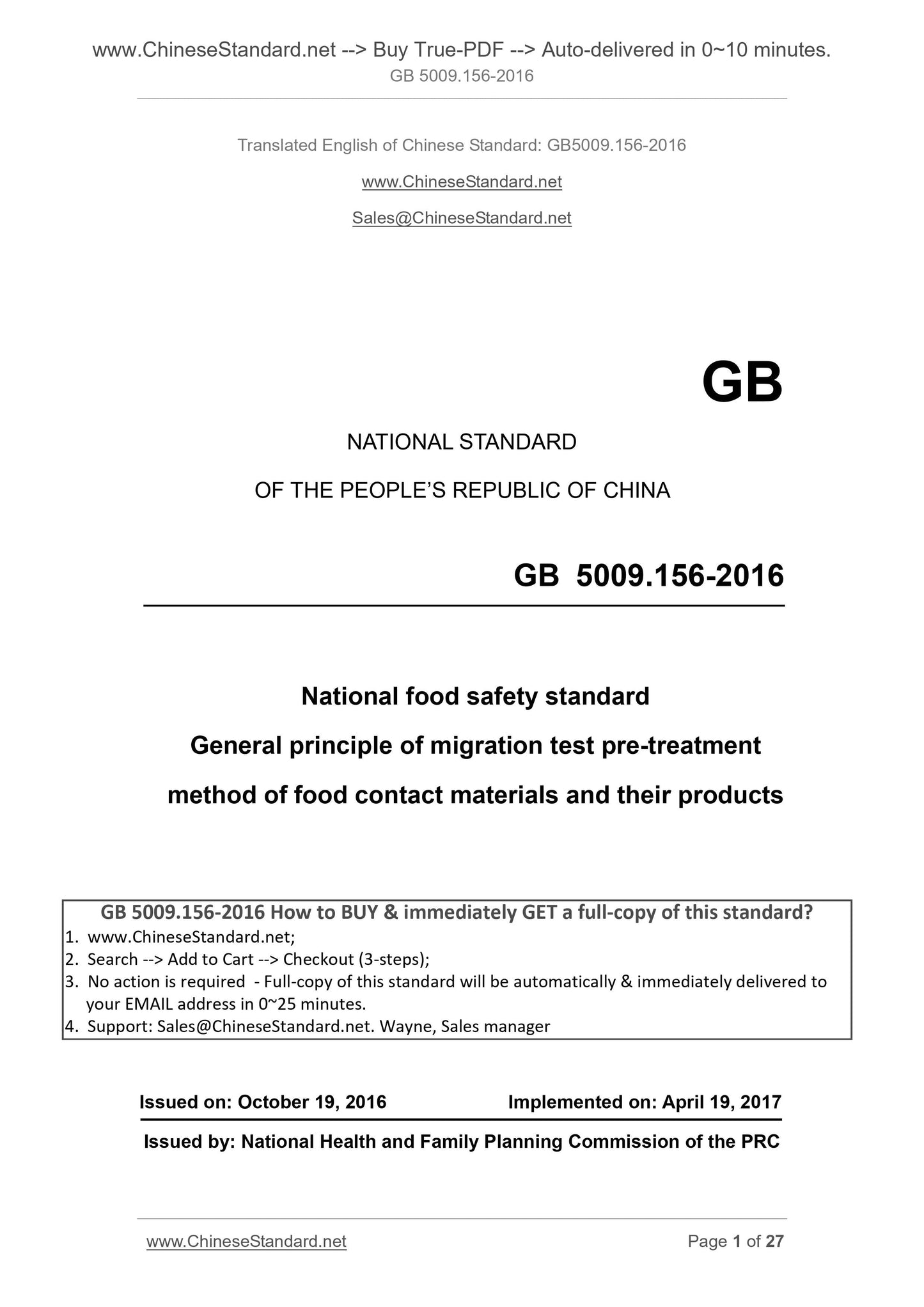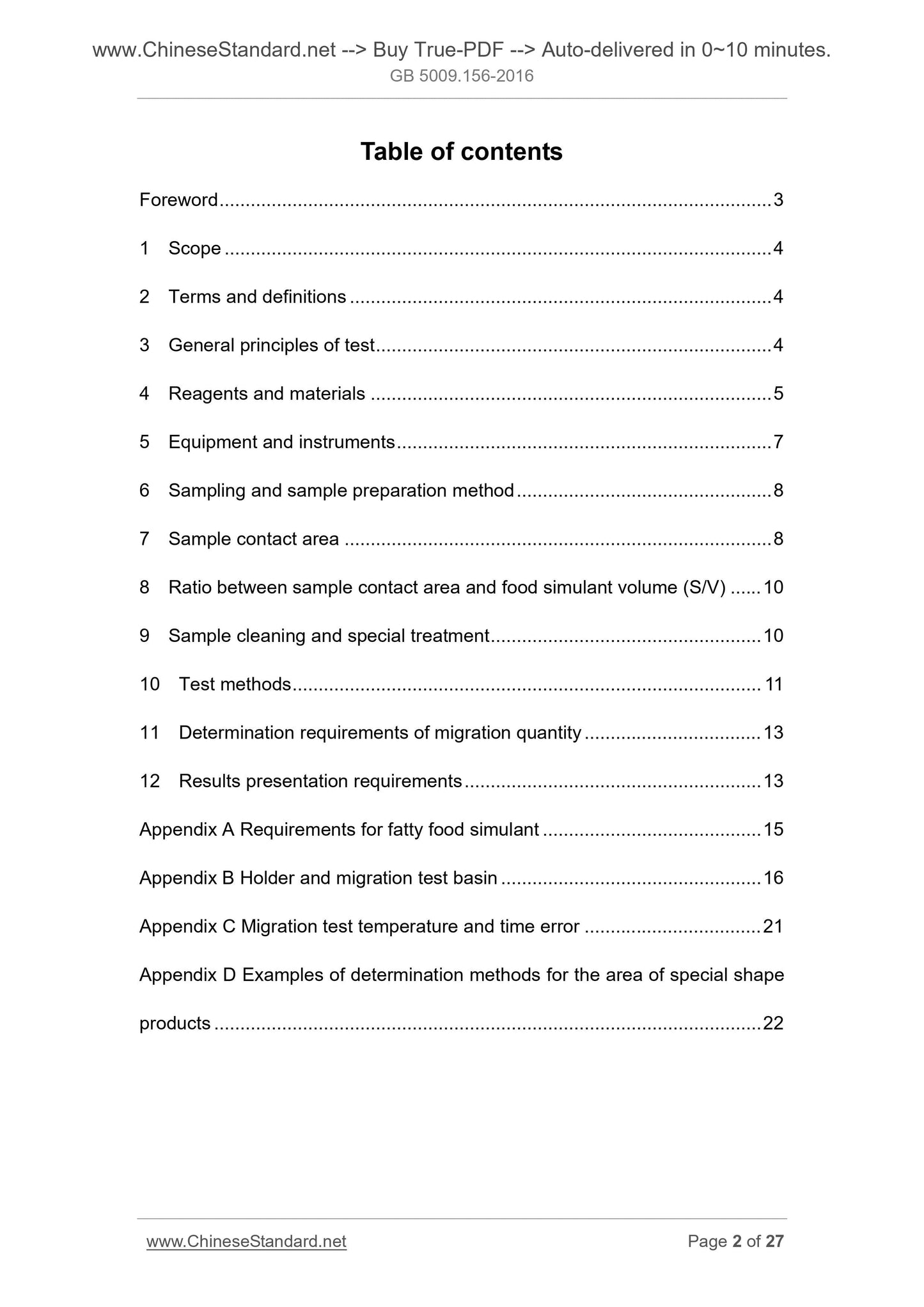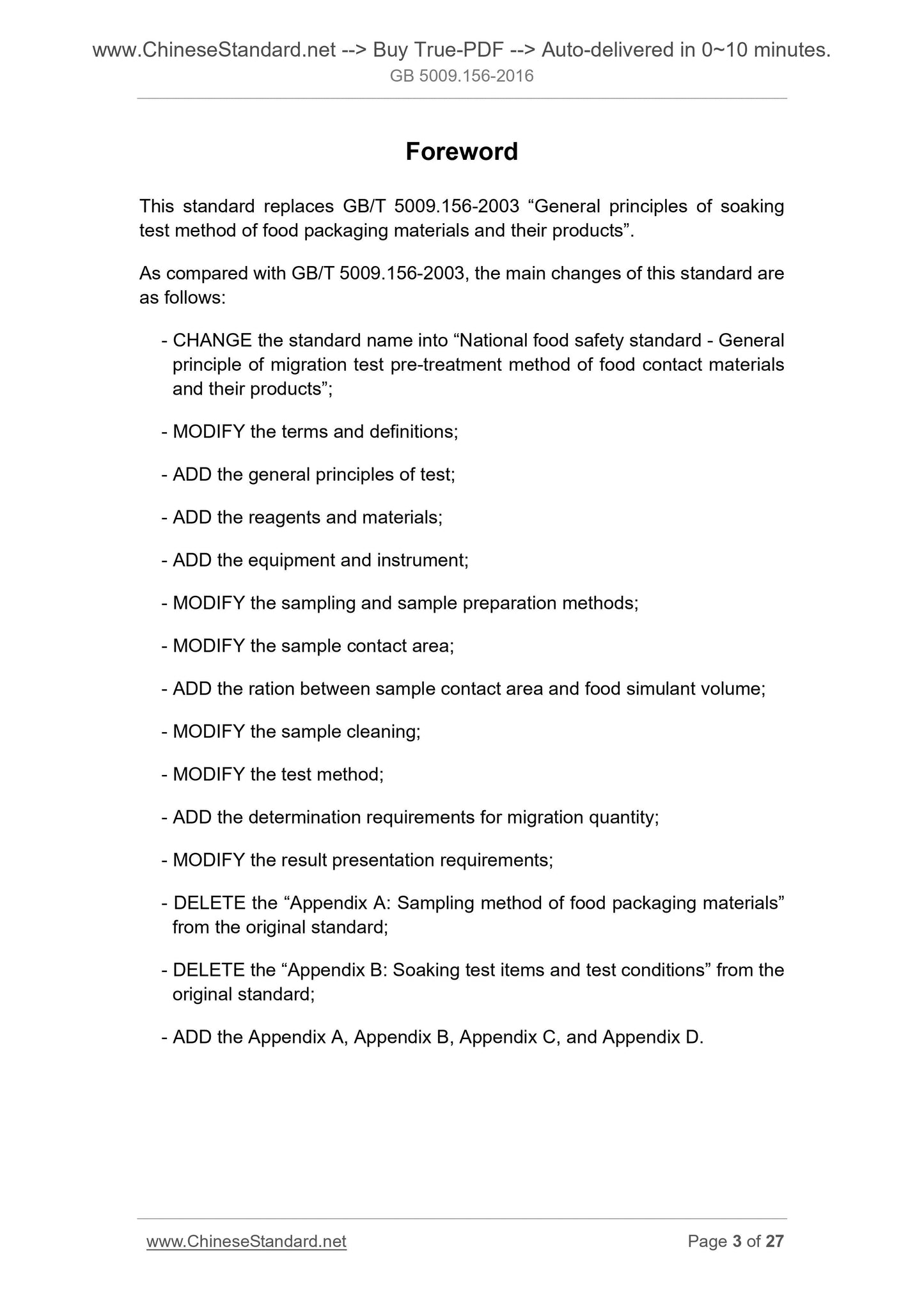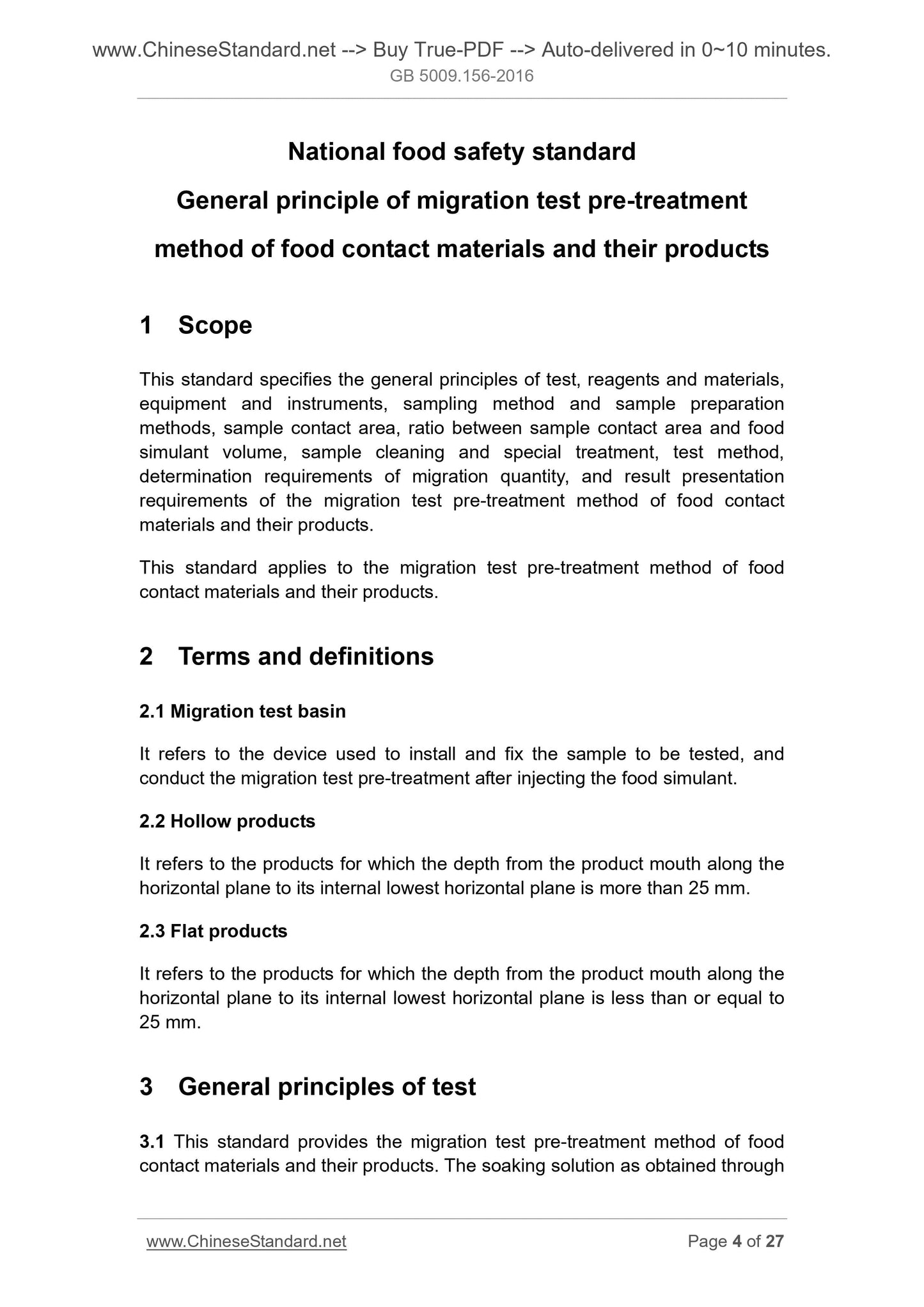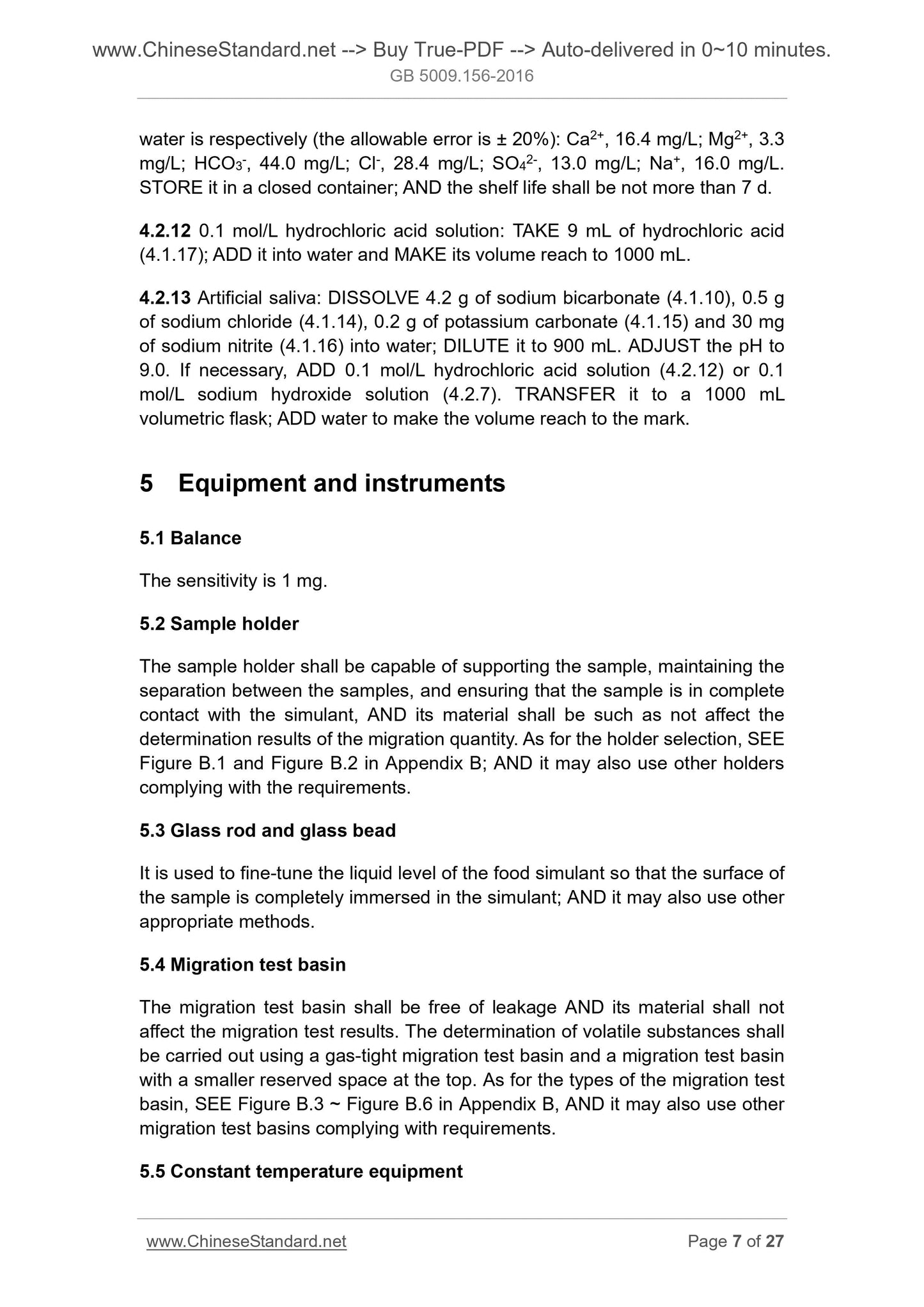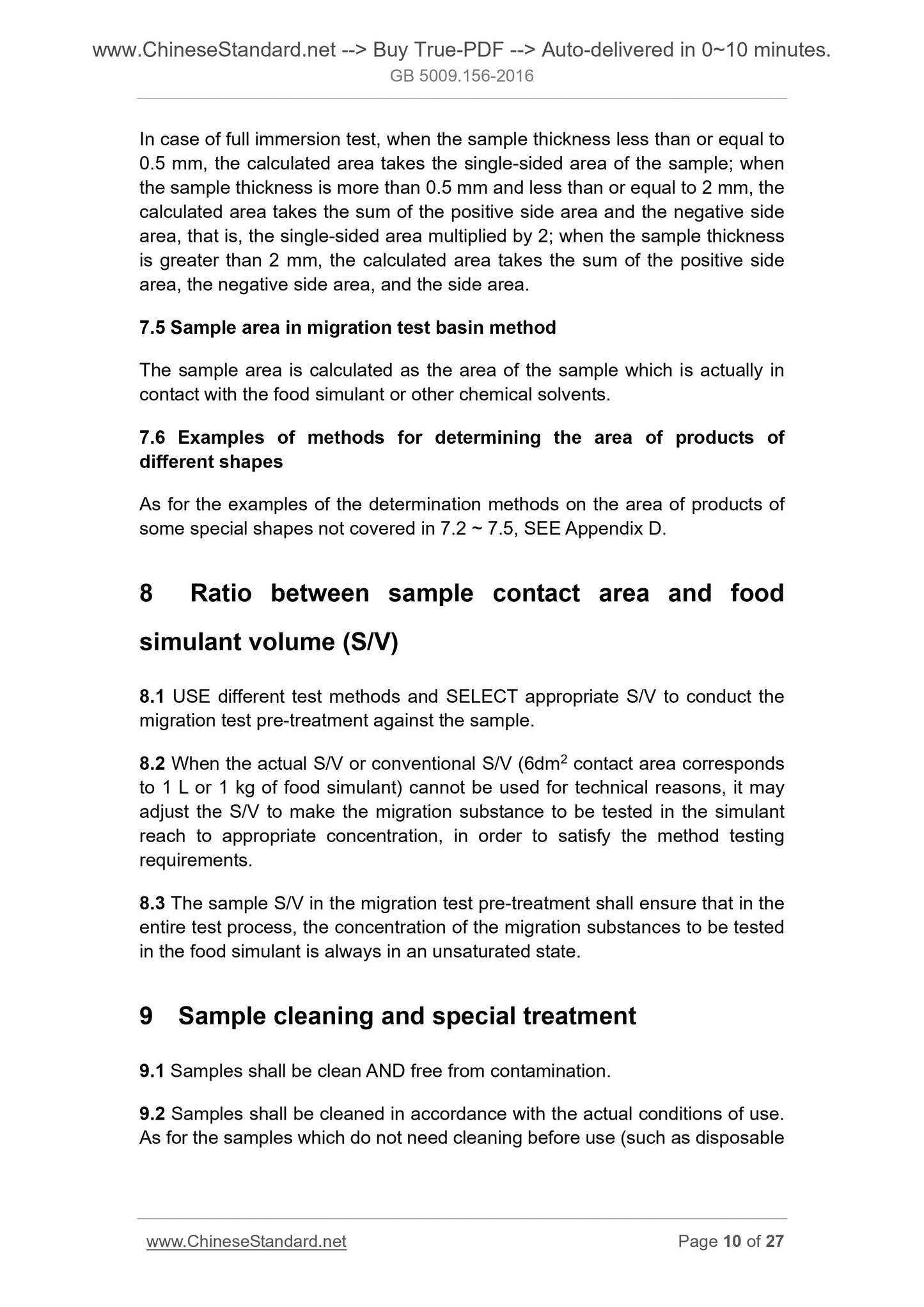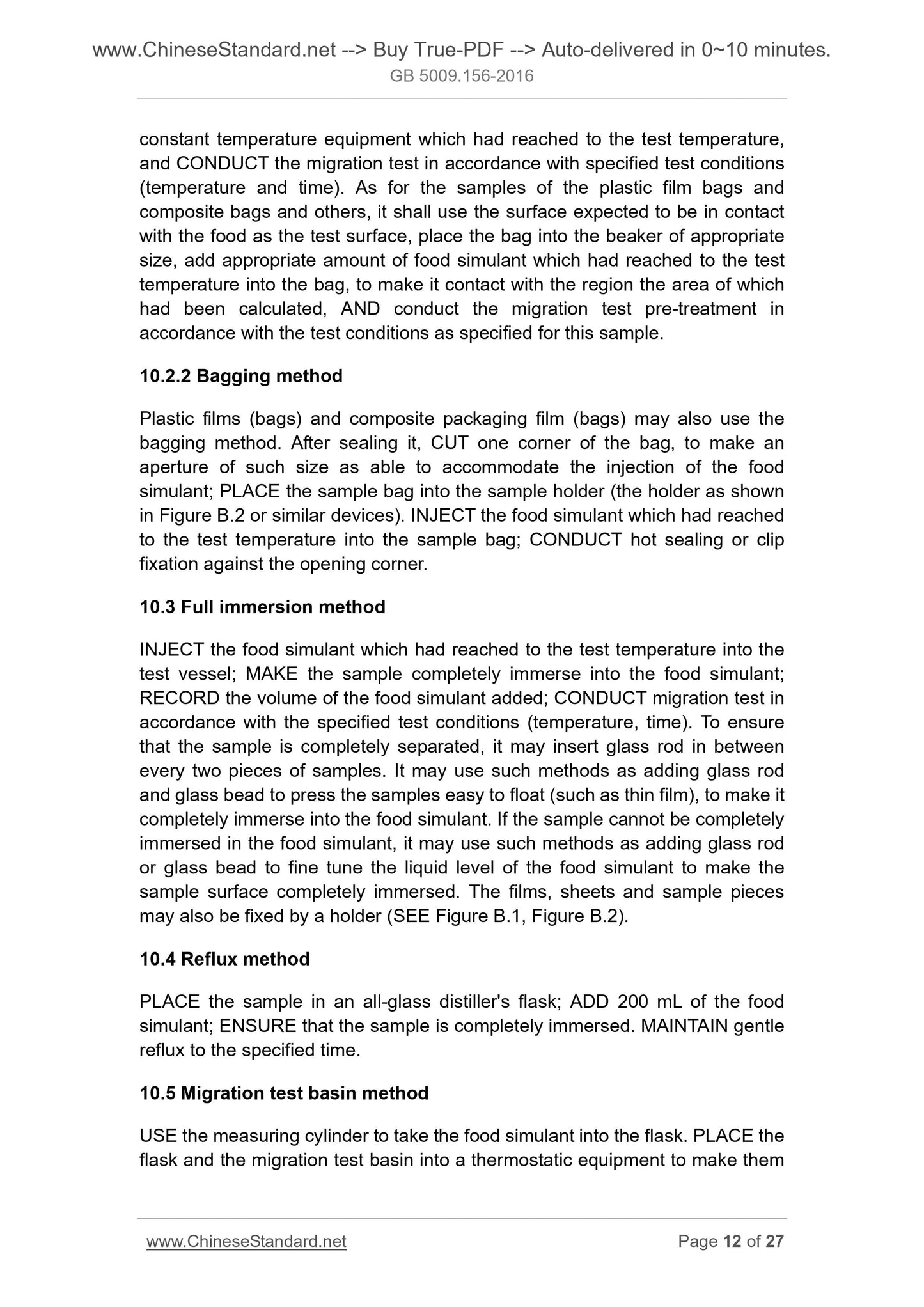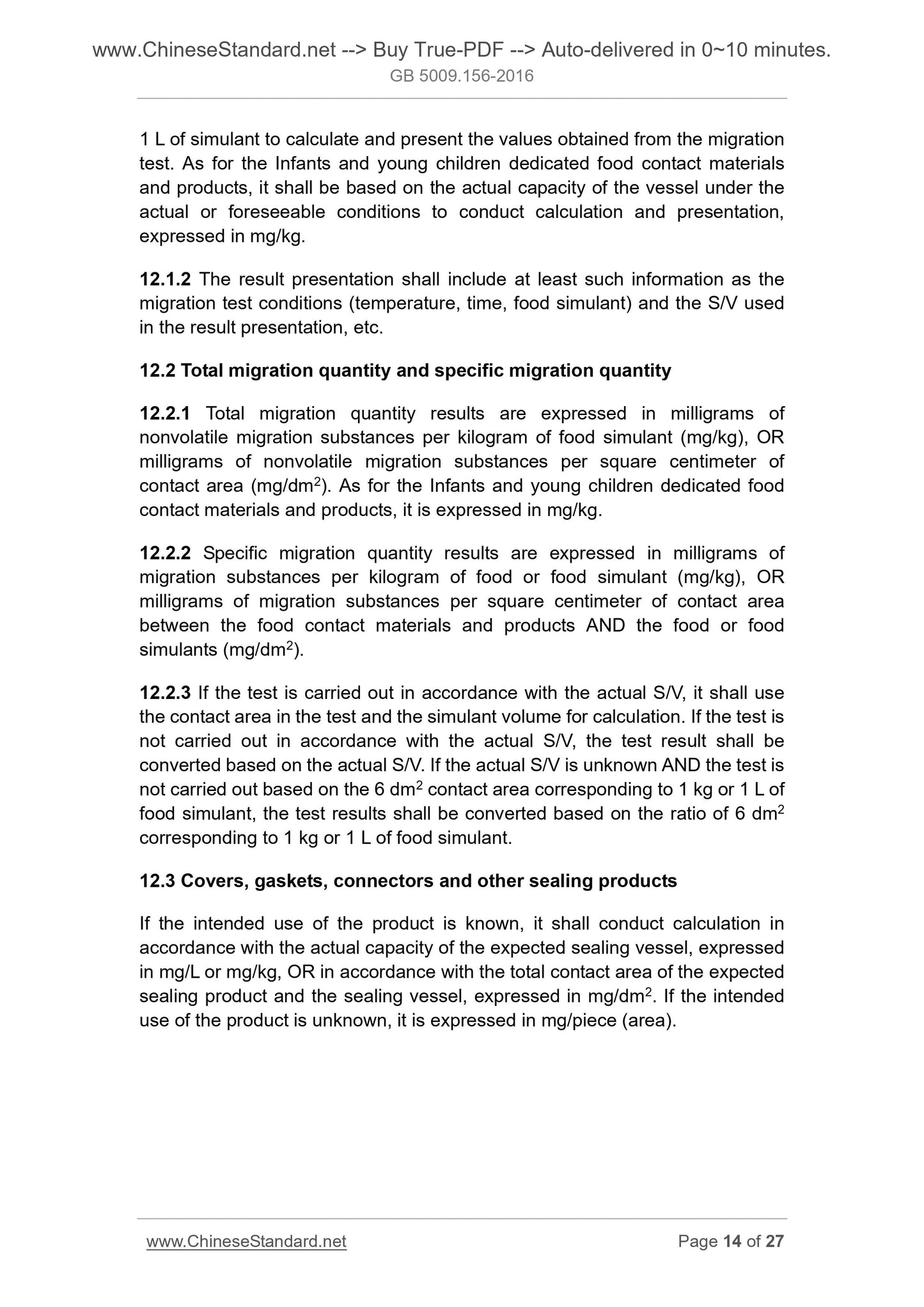1
/
of
8
www.ChineseStandard.us -- Field Test Asia Pte. Ltd.
GB 5009.156-2016 English PDF
GB 5009.156-2016 English PDF
Regular price
$85.00
Regular price
Sale price
$85.00
Unit price
/
per
Shipping calculated at checkout.
Couldn't load pickup availability
GB 5009.156-2016: National food safety standard - General principle of migration test pre-treatment method of food contact materials and their products
Delivery: 9 seconds. Download (and Email) true-PDF + Invoice.Get Quotation: Click GB 5009.156-2016 (Self-service in 1-minute)
Newer / historical versions: GB 5009.156-2016
Preview True-PDF
Scope
This standard specifies the general principles of test, reagents and materials,equipment and instruments, sampling method and sample preparation
methods, sample contact area, ratio between sample contact area and food
simulant volume, sample cleaning and special treatment, test method,
determination requirements of migration quantity, and result presentation
requirements of the migration test pre-treatment method of food contact
materials and their products.
This standard applies to the migration test pre-treatment method of food
contact materials and their products.
Basic Data
| Standard ID | GB 5009.156-2016 (GB5009.156-2016) |
| Description (Translated English) | National food safety standard - General principle of migration test pre-treatment method of food contact materials and their products |
| Sector / Industry | National Standard |
| Classification of Chinese Standard | C53 |
| Word Count Estimation | 20,235 |
| Date of Issue | 2016-10-19 |
| Date of Implementation | 2017-04-19 |
| Older Standard (superseded by this standard) | GB/T 5009.156-2003 |
| Regulation (derived from) | State Health and Family Planning Commission Notice No.1516 of 2016 |
| Issuing agency(ies) | National Health and Family Planning Commission of the People's Republic of China, State Food and Drug Administration |
Share
